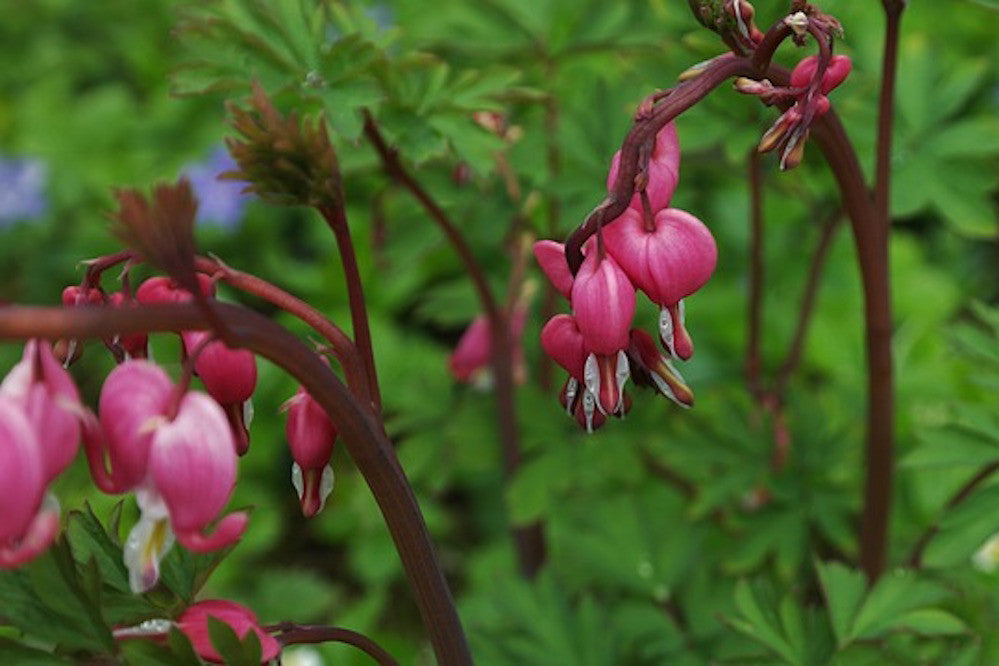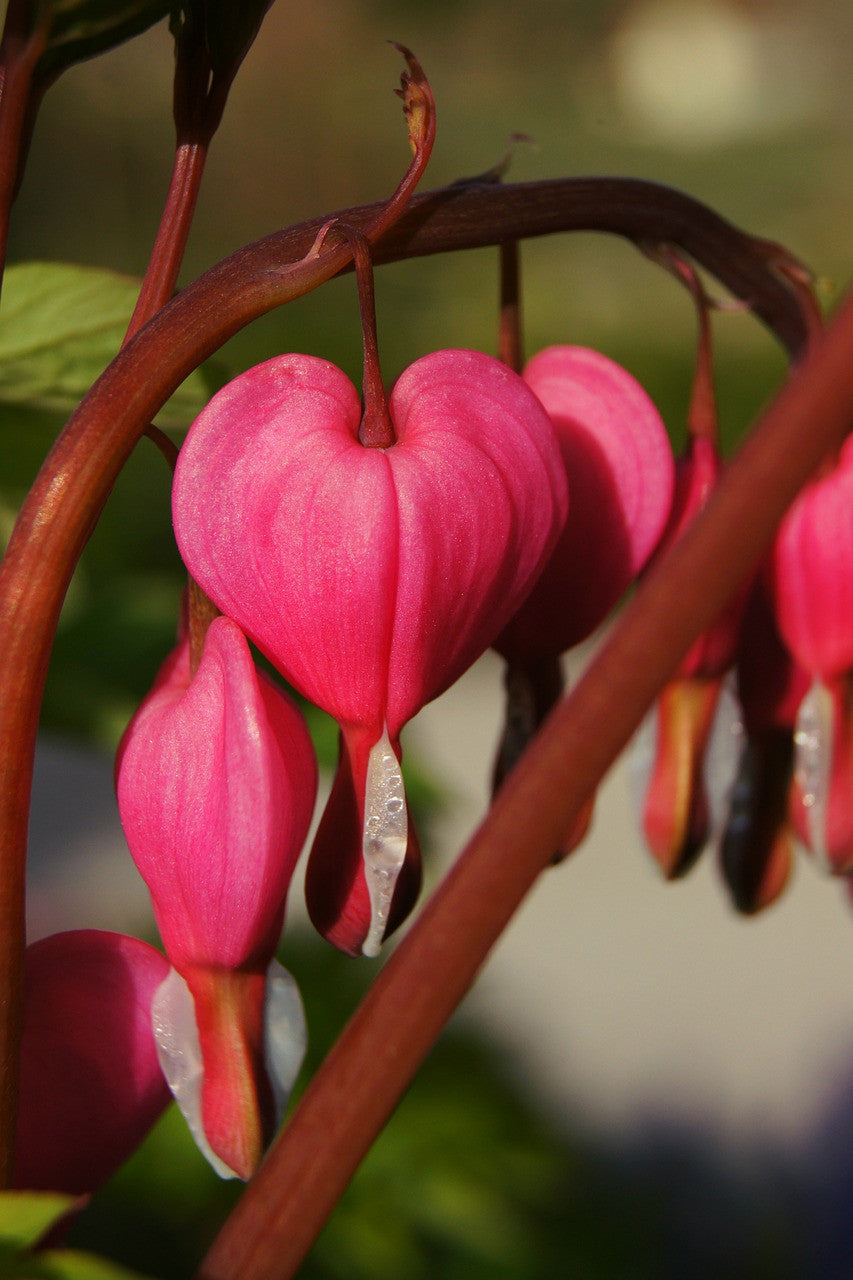Lamprocapnos spectabilis 'Valentine'
Approx. 0.5 litre pot
About this cultivar:
LLamprocapnos spectabilis 'Valentine' has flowers with brilliant red outer petals which contrast with the white inner petal beneath. The dark green foliage also adds a bit of richness to the over all effect. First discovered in 2005 by Phyllis and Lyle Sarrazin in British Columbia. Perhaps the most striking Lamprocapnos/Dicentra.
- Position: Full sun, partial shade, full shade
- Soil: Almost any soil, grows well in Ballyrobert
- Flowers: April, May, June
- Other features: Royal Horticultural Society Award of Garden Merit (RHS AGM), Interesting Foliage or Fruit
- Hardiness: Fully hardy - grows well in Ballyrobert
- Habit: Clump forming, bushy, Pendulous or Weeping
- Foliage: Deciduous
- Height: 40 - 75 cm (1.3 - 2.5 ft)
- Spread: 40 - 75 cm (1.3 - 2.5 ft)
- Time to full growth: 2 to 5 years
- Plant type: Herbaceous Perennial
- Colour: Green, black, pink
- Goes well with: Carex, Polygonatum, Hosta, Pulmonaria
About this genus:
Lamprocapnos used to be know as Dicentra until 2011 ( from the Greek dí "two", kéntron "spur") and is a genus of perennial herbaceous plants in the poppy family (Papaveraceae). Commonly know as Dutchman's breeches, lyre flower, lady in a bath or bleeding hearts because of the shape of the flower. The first plants specimens were introduced into Europe in 1816 but were lost only to be re-introduced in the 1840s from Japan by the Scottish botanist and plant hunter Robert Fortune.
We *heart" Lamprocapnos in our garden at Ballyrobert! Easy to grow, beautiful drooping habit, wonderful flowers, attractive foliage, long blooming and coming in a variety of shapes, size and colours; what is not to like?!?
Depending on the cultivar the flowers can come in yellow, white, pink, and red and the foliage can vary from almost purple to very light green. Some love full sun and some love full shade but most will grow in almost any soil or situation.
Lamprocapnos pair well with Carex, Polygonatum, Hosta, Pulmonaria - try them or you'll have a broken heart.




